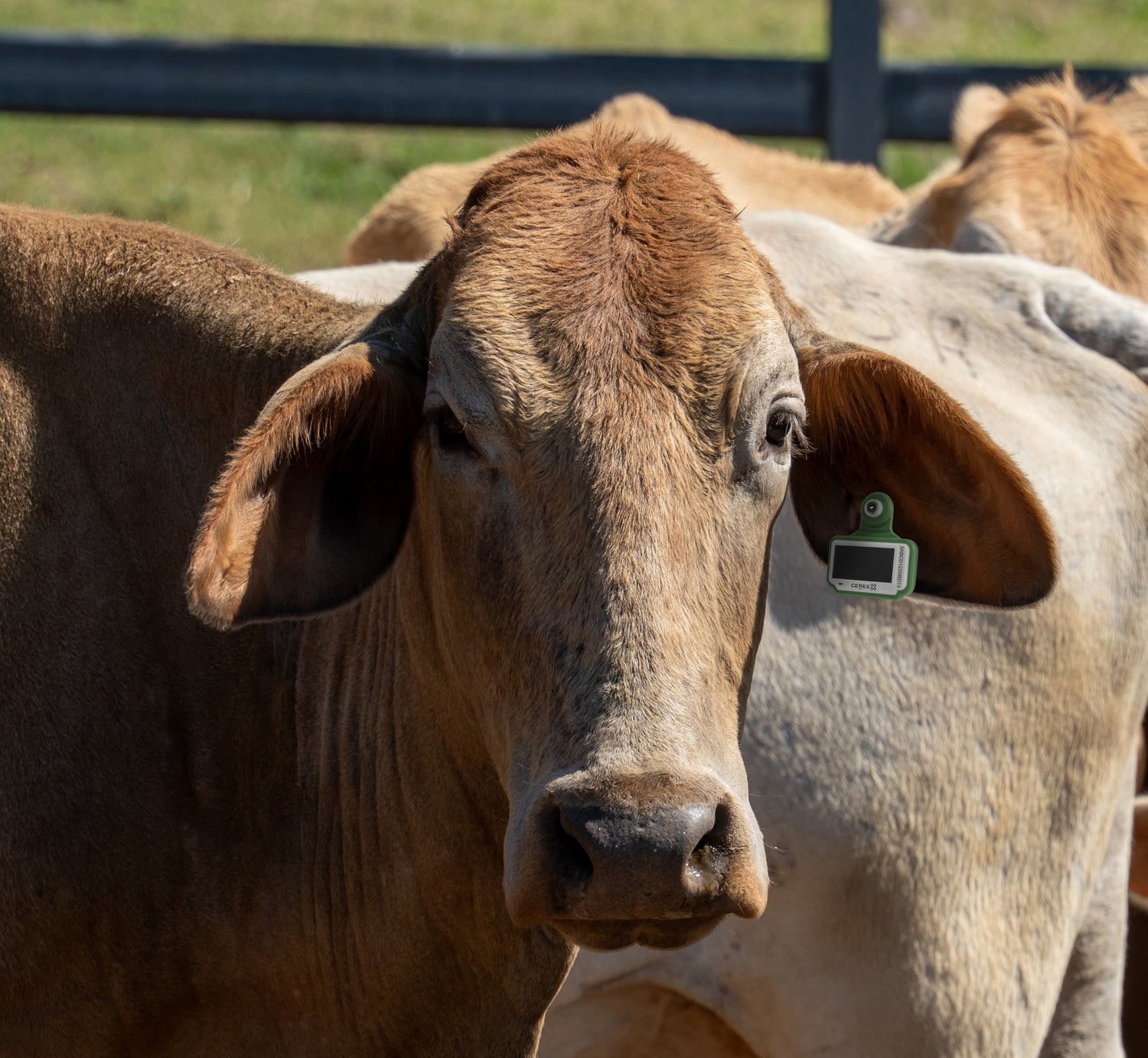
Pasture Feed Intake
CERES TAG's groundbreaking Pasture Feed Intake (PFI) technology is shedding new light on how we evaluate and select livestock for breeding.
PFI offers insights into cattle grazing efficiency, challenging traditional metrics of livestock performance and paving the way for improved genetic and land use optimisation.
Measuring Efficiency
PFI introduces individual pasture intake measurements, which have unveiled a more complex and informative picture of forage efficiency. Despite all animals grazing under the same conditions, substantial variations in pasture consumption among individual animals can be observed.
By capturing both the inputs (pasture intake) and the outputs (weight gain or milk production) for each animal, producers can now assess the feed efficiency of individual cattle - the amount of pasture each animal requires for a unit of production.
What does it measure?
-
Grazing
To the nearest 30 seconds
-
Resting & Ruminating
To the nearest minute.
-
Walking
To the nearest minute.
-
Drinking & Unclassified Behaviour
To the nearest minute.
-
Dry Matter (Pasture) Intake
Estimated kilograms consumed per day.
-
Methane Production
A prediction of grams emitted each day.
Case Study: Rethinking Performance Metrics
A recent CSIRO study presents a paradigm shift in livestock evaluation.
In a controlled trial, cattle showed varying live weight gains, with certain cattle initially appearing as the superior choice for breeding based on their substantial weight increases. However, an intriguing pattern emerged upon reviewing the Pasture Feed Intake data.
Despite being previously overlooked due to lower overall weight gain, specific cattle displayed remarkable feed efficiency— that is, they consumed significantly less pasture for each kilogram of weight gain. In contrast, some of those with high weight gain had a disproportionate intake, necessitating much more pasture for the same weight increase. This feed efficiency metric is crucial for sustainable farming: efficient cattle require less feed, allow for higher stocking rates, and enable better pasture management. Additionally, they produce less methane, a win for both productivity and sustainability.
The power of this study lies in the genetic aspect of feed efficiency. Selecting more efficient animals for breeding promises not just immediate gains in resource management and sustainability, but it also secures a lineage of cattle that will continue to thrive efficiently, providing future benefits. This case study advocates for a data-informed approach to breeding, ensuring productivity and environmental stewardship go hand in hand.
Implications for Productivity and Sustainability
-
Optimising Land Use
By identifying the most feed-efficient cattle, farmers can optimise land use, potentially increasing stocking rates or allowing pastures to rest without sacrificing output. This capability to more effectively manage resources underscores the importance of integrating feed efficiency into livestock selection criteria.
-
Reducing Methane Emissions
Feed efficiency also has profound implications for sustainability, particularly in reducing methane emissions—a significant concern in livestock farming. Animals that convert feed to weight more efficiently produce less methane per kilogram of weight gain. For instance, Ben generated 40-70% more methane than Carlos and Diego for each kilogram of weight gained, highlighting the environmental benefits of selecting for feed efficiency.
What are the compatible software options to view PFI data?
Genetic Selection for Future Generations
Feed efficiency is a genetic trait, allowing this valuable data to be used in genetic selection processes. Monitoring and selecting for feed efficiency can enhance the efficiency of future livestock generations, promoting both productivity and sustainability in agriculture.
-

CERES RANCHER
CERES TAG's newest model. With CERES RANCHER, it's everything you enjoyed about the previous models and more. Monitor and receive updates up to 4 times per day via satellite. With a new design and more accurate algorithms, to help you improve your productivity and profitability.
-

CERES RANCH
Get the most out of GPS animal monitoring through CERES RANCH. A reusable tag that’s been made to last the toughest conditions. Monitor your animals anywhere, anytime with updates up to 4 times per day. Know where your animals are, and what they are doing.
Drive Efficiency
CERES TAG's Pasture Feed Intake technology not only revolutionizes our understanding of cattle performance but also aligns agricultural practices with the urgent need for sustainability. By focusing on feed efficiency, the agricultural sector can ensure more productive and environmentally friendly livestock management. This shift in perspective from merely assessing weight gain to understanding feed conversion efficiency marks a significant step forward in the journey towards sustainable agriculture.




